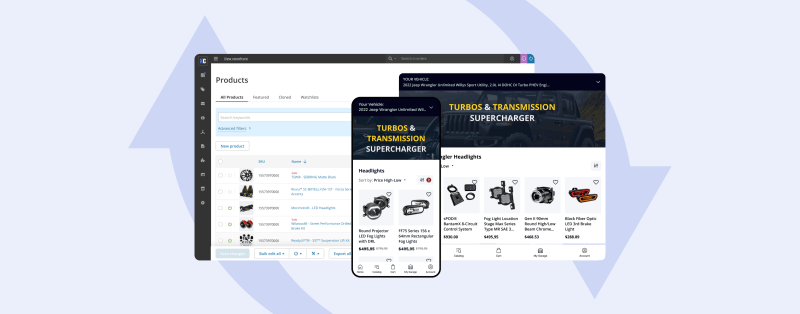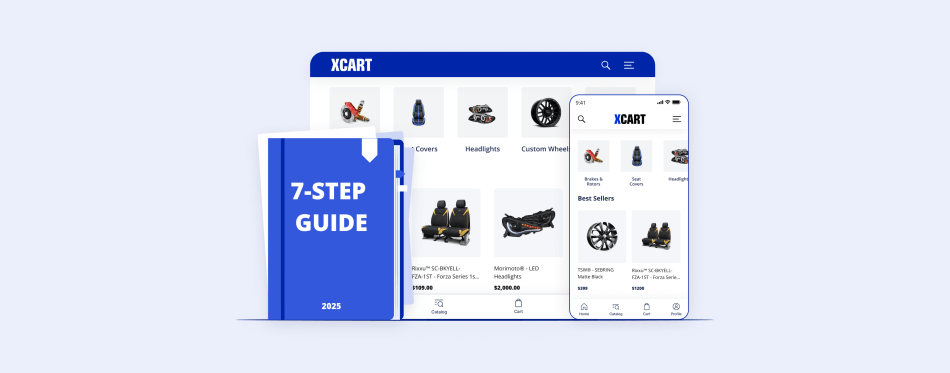Top Tools and Strategies to Turn Your Auto Parts Catalog into Your #1 Sales Driver
Whether you are an auto parts eCommerce retailer or a manufacturer selling online, you know that product catalog management is a never-ending task. Once compiled, even a well-structured and comprehensive auto parts catalog must be regularly updated and optimized.
A clean auto parts catalog ensures accurate product search across the website, ultimately fueling conversions, delivering a superior user experience, and giving sellers a strong competitive advantage.
With this in mind, we’ve compiled the best tools and practices to help you enhance the quality of your product database, improve parts data management, and turn your catalog into a profit booster.
Evaluate Digital Investments Carefully
If you’ve been in the auto parts business for a while, you’ve probably seen the shift. Everyone’s talking about digitization, and for good reason. It’s not just a buzzword, eCommerce is the new normal. Just like a powerful engine drives vehicle performance, the right technology behind your store gives you the confidence to move fast and stay competitive.
Legacy automotive retailers who still rely solely on brick-and-mortar operations need to move forward. Running a successful online parts business today means having a data-driven strategy focused on catalog ingestion and digital deployment.
Of course, it’s not always simple. One of the key pillars of that success is a platform that simplifies catalog digitization rather than complicating it. Whether you build your solution or buy one, it’s critical to weigh all the long-term implications. That means evaluating ROI, minimizing risk, and making sure the solution is scalable.
Every business has different needs and capabilities, but what’s proven to work? Scalable, high-impact solutions that support upgrades over time. Aftermarket businesses that prioritize ROI-focused digital investments grow 2–3x faster than their competitors.
Your Catalog Is Not Just a Database — It’s a Sales Channel
A core principle of successful online auto parts retail: keep a close eye on how your products perform. With the right insights, you can spot slow-moving items and optimize listings to improve visibility and conversions.
When thoughtfully structured and optimized, it can increase conversions by up to 30%.
So, what makes a catalog high-performing?
- Clean visuals and multiple images
- Clear titles and descriptions
- Accurate fitment mapping to lower return rates
- Key features and benefits explained
- Complete inventory view, including distributor stock
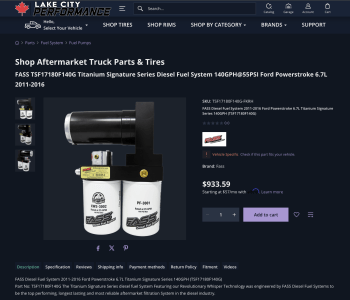
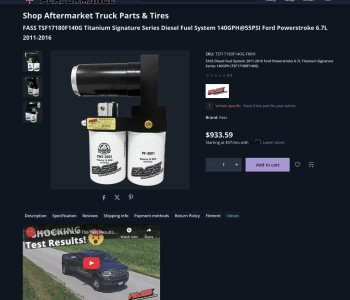
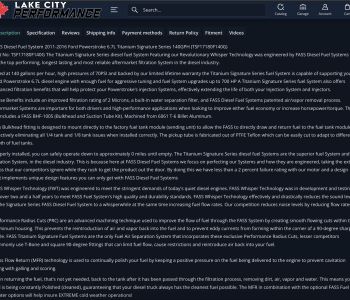
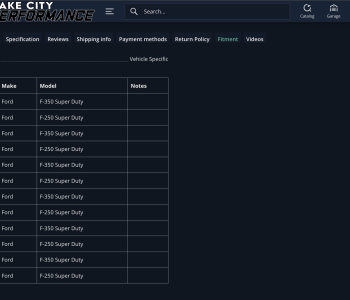
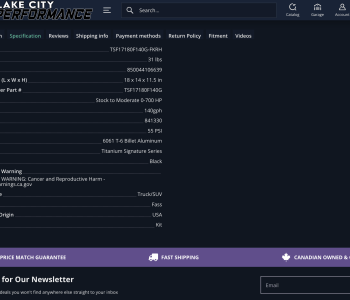
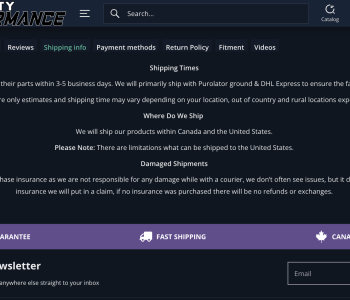
Images sourced from the Lake City Performance store, built on the X-Cart platform.
Focus on Relevant Data and Adapt Your Catalog Accordingly
Not long ago, delivering accurate part search results based on vehicle fitment was a significant challenge, requiring manual effort and time and often being unreliable. Fast forward to today, and most online auto parts stores now support fitment-based filters and results. But here’s the catch: those results are still largely one-size-fits-all.
And yet, no two shoppers are the same, even when they’re searching for parts for the same vehicle. Driving habits, climate, use cases, and previous repairs. All of these shape what each customer needs.
Did you know?
Return rates in the auto parts space can reach 20%, and a large portion of that comes down to poor catalog data. Missing compatibility info, vague product descriptions, or no installation guidance all create friction. In fact, 19.4% of parts go back to the store, often because the buyer got the wrong fit, and that erodes trust.
By monitoring buyer behavior and intent data, you can personalize the shopping experience far beyond basic filters, minimizing return rates.
Think of your buyers in four main categories:
- Reactive: fixing an issue
- Routine: staying on top of maintenance
- Aspirational: looking to upgrade
- Professional: wrenching for others
Understanding why someone is shopping is just as important as what they’re shopping for. From the moment a shopper lands on your site, you’re already collecting valuable intent signals:
- How did they get there? (Organic search? Ad? Email? Social?)
- What did they search for?
- What filters did they apply, pages they browsed, or links they clicked?
A truly relevant experience means more than showing the right parts, it’s about showing them the right parts, in the right context, instantly. Take a cue from examples like CarID, where landing pages adapt to show top-selling products based on region, timing, and customer journey insights (e.g., most popular brakes for F-150s in the Northeast during winter).
Features and Tools to Empower Your Auto Parts Catalog
1. Powerful Search Functionality
Advanced search functionality guarantees fewer returns and higher customer retention rates, making it a must-have feature, especially in a highly competitive automotive sector.
Year/Make/Model
Integrated Year/Make/Model search filters allow users to instantly get accurate results when searching for specific car parts within the catalog. On top of that, you’ll get access to filtering statistics to use these insights while adding new products or starting promotions.
VIN Lookup
Search by vehicle’s identification number (VIN Lookup) ensures the maximized vehicle-part compatibility and gives meaningful insights into cross-reference car parts’ details, dispelling customer’s doubts while searching for a certain item that would fit their car.
2. ‘My Garage’ Feature
With ‘My Garage’, customers can add a specific type of vehicle to the list and store this information to easily access it in the future and ease the search for particular car parts. By implementing this feature, you provide personalized experiences explicitly tailored to individual consumers, which, in turn, has the potential to increase the lifetime value of each customer through repeated purchases over time.
3. Integrations with Trusted Automotive Databases
With access to extensive automotive databases, such as SEMA (Specialty Equipment Manufacturers Association) or ASAP (Aftermarket Automotive Suppliers Association), sellers get technical details on vehicle parts and accessories available in the market today. This allows automotive retailers to keep their product catalogs clean and up-to-date without spending significant resources on research.
4. Intuitive Storefront Navigation
Sad but true, a cluttered storefront layout can cancel all the improvements you’ve made to your product catalog, scaring away your customers. This is where transparent and convenient navigation can significantly improve customer loyalty. In addition, you can enhance your website design with more features and images that resonate with your brand, adding to brand consistency and recognition.
5. Dedicated Hosting
A high-performance, dedicated server can provide the power and speed your automotive store needs to thrive, enabling faster response time, reducing the risk of website’s outages, and contributing to your online store security.
Side note: X-Cart 5 eCommerce websites, hosted on our specially designed X-Cart servers, load in just 0.2–0.4 seconds. Even high-SKU customers achieve exceptional results, loading in less than 0.7 seconds with 1 million SKUs. Our servers are monitored 24/7 and timely updated to spot and fix any issue, which guarantees 99.99% uptime for your website.
Frequently Asked Questions
It helps customers find the right parts fast, improves SEO, boosts conversions, and reduces returns. A solid catalog builds trust and drives repeat business.
A PIM system is essential. It centralizes product data, ensures consistency, and facilitates easier updates and scaling.
Use clear descriptions, SEO keywords, high-quality images, logical categories, and filters such as Year/Make/Model. Keep pricing and availability accurate.
Avoid outdated tools, overloading listings, ignoring SEO, and neglecting mobile and reviews. Inconsistent data and poor user experience (UX) also hurt conversions.
Accurate information and clear visuals help customers buy the right parts. Easy navigation and fitment tools boost confidence and keep them coming back.
In a Nutshell
Don’t miss out on potential sales and satisfied customers with an accurate and complete auto parts catalog and its fitment data. At X-Cart, we understand the complexities of large auto parts databases and what it takes for your auto parts website to succeed online. Therefore we offer eCommerce software with native search functionality and integrations designed specifically for the automotive industry.
From advanced faceted search with automotive-specific selectors, to large extensive catalogs, to powerful integrations with trusted partners in the automotive sector, we’ve got you covered. Combine this with an exclusive approach to your unique business needs, direct person-to-person communication, and get a perfect business growth formula.
Make Your Parts Catalog Your Sales Driver with X-Cart
About the author

